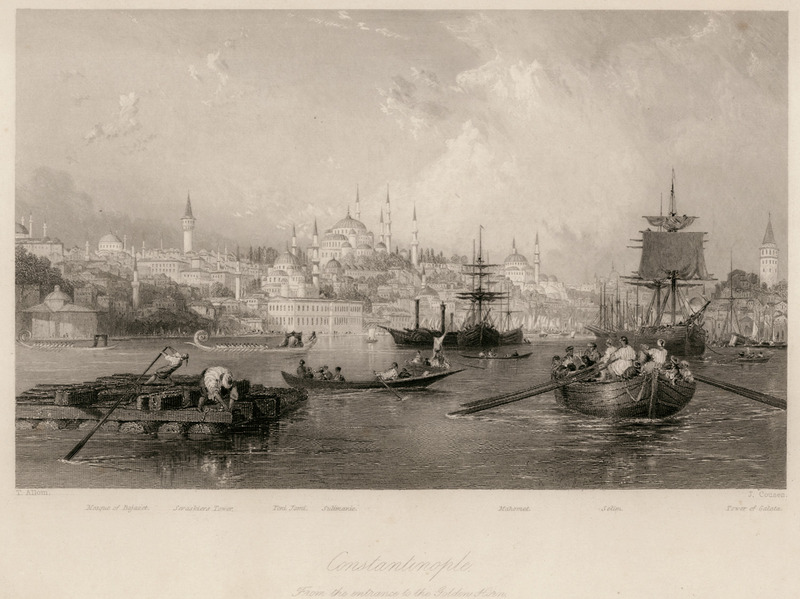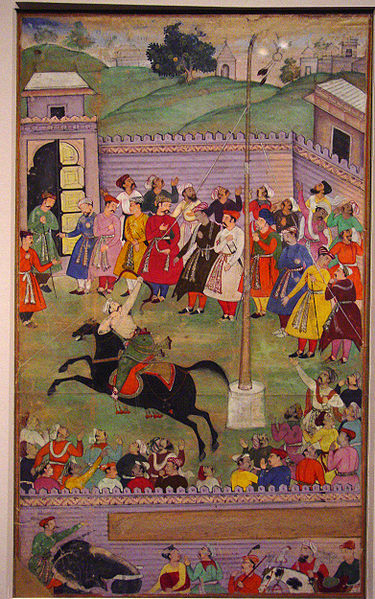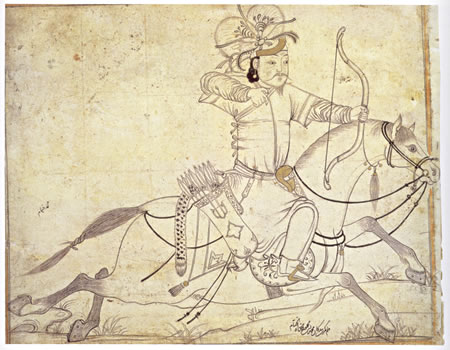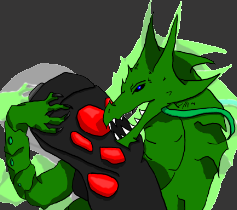Kodiri Empire
Structure
History
Founding
The Kodiri Empire started with the fragmentation of an earlier dynasty. The farmers around the city of Lidaidi carved out their own nation, and made peace with the nomadic herders and raiders of the Qadiya people - whose leader was none other than the charismatic Kodir, who quickly convinced the farmers to throw their full support behind her warriors. She taught them the ways of battle, and led a series of successful hit-and-run raids against the neighboring lands. She also turned out to have a talent for the organization and arithmetic needed to run a nation, and the farmers decided they trusted her more than the nobles who had long profited off their labor. She rode into Lidaidi at the head of a procession of horsemen and armed peasants, declaring herself Queen. The priest who had been ruling until that moment, a man capable of reading the changing winds, came out to meet her, bowing and declaring her clearly an emmissary from the gods themselves, the long-lost daughter of a previous dynasty. She accepted the fiction with amusement, and it became the official 'truth' of the nation. She took no spouse during her rule, content with her son Halar, the only offspring from a previous marriage, as her successor.The Establishment of an Empire
Kodir I waged war upon her neighbors, but mostly with an eye towards raiding for goods, and towards further establishing the prominence and borders of her new nation. She firmly secured its location within the narrow strip between the mountains to the south and the shallow sea to the north. Kodir died in the year 3,925 of the Dawn Era, one hundred and two years after being declared Queen. Her son Halar took the throne uncontested. Halar had learned the art of warfare first on the steppes and then at his mother's side as she secured the fledgling nation, and an ambition stirred within his chest - to see all the peoples of the worlds united under a single banner. He led a long series of military campaigns, rapidly growing the empire - somewhat past the administration's ability to handle the new influx of people. He died in battle in the year 3,547 of the Dawn Era, having ruled for one hundred and seventy eight years.Consolidation
Halar had chosen to follow his mother's lead, having only a single child by a single wife, so as to not risk a succession crisis upon his death. Halar's sole daughter Rasir was born in the year 3,953 of the Dawn Era, and was young when her grandmother died. She excelled on the battlefield, rising through the military's ranks to serve as a top general, but retired from battle a century before her father's death to take on an administrative role. She'd objected to the rapid expansion, feeling that it was better to properly integrate each new conquered territory before moving on to the next. Rasir presided over the Kodiri Peace, a time of artistic and scientific flourishing throughout the empire and beyond. She formalized many of her grandmother's laws, and summoned the largest kameao-tumi in history to advise her on further laws. Representatives from every 'tribe,' no matter how minor, throughout the empire were included, even from newly conquered peoples. She then expanded upon her father's early mail system - which had been for solely military and official use - and opened it to the public, creating a surge in correspondence between even the farthest flung reaches of the empire. Rasir opened the continent's first university in the ancient city of Nustei, modeling it after similar institutions in the Lokmei Empire, and made primary schooling mandatory. All citizens of the empire were to know how to read and write, how to calculate, how to engage in several art forms, the history of the empire, the laws they were to follow, the religion of their neighbors, and many other topics. An unprecedented level of class mobility began, with numerous great artists and engineers rising from the lower classes, leading to revolutions in science that served the common people. Rasir's long rule - one of the longest in history - ended when she died of old age in the year 3,008 of the Dawn Era at the age of nine hundred and forty five, having ruled for five hundred and thirty nine years.A Second Push
Rasir's only child, her daughter Dalir, was of a less domestic temperament, having heard stories of her grandfather's many victories. She wished to continue his dream of the world united under one banner, and after her mother's death she began pushing outwards once more. She met with some success on land, bringing the Kodiri Empire to its greatest historic extent, but was foiled by water, unable to conquer more than a few outlying islands, and completely unable to reach the other two continents. She was already in her later life when she took the throne at the age of five hundred and seventeen, having been born in the year 3,525 of the Dawn Era - a mere two decades after her grandfather's death. She did not rule for long, as elven rulers go, dying forty years into her rule in the year 2,968 of the Dawn Era. The rulers for the next millennium would be largely unremarkable, refining the legal system and occasionally making attempts to recapture the early advance of Kodiri's borders.An End to All Things
However, troubles came in quick succession towards the end, with the King Emperor Dimesemada dying of a plague in the year 1659 of the Dawn Era, along with a good fourth of his empire's population. His children died soon after, and a cousin, who had been spared the plague due to her rural abode, took the throne. Queen Empress Hiwumoko ruled unofficially for three years as the Empire fell into chaos, only achieving her coronation in Dawn Era 1656. She was an unpopular and unskilled leader, ill prepared to take the throne - after all, she'd never expected to inherit anything greater than a country estate. Succession movements began to rapidly pick up steam, with peoples fracturing largely along ethnic and religious lines. Kodiri formally fractured in the year 1488 of the Dawn Era, when three provinces declared their succession. The other five followed within a few moons. Hiwumoko waged a futile war to keep the empire together. She turned out to have a keen mind for battlefield strategy, successfully leading campaign after campaign despite the defection of several major generals, but it was to no avail. The last Queen of Kodiri was Maiqa, who took the throne in 1309 of the Dawn Era after her mother's death in battle. Maiqa reversed her mother's policies, laying claim only to her small nation, and refusing the title of Empress. For the first time in nearly two centuries, Kodiri knew peace - but it was not to last. Forty two years later, a civil war broke out, which would rage for fourteen years until her death. Her infant son was spirited away by a maid, and vanished into the desert beyond the mountains - their final fate unknown, with rumors ranging from a horrid death to finding a portal to another world.Demography and Population
Territories
Military
The Kodiri Empire remained famous for its horse archers even as successive leaders shifted towards more conventional troops, though her troops were equally skilled in all horseback weapons. The horse soldiers gave the empire a tremendous advantage upon the open plains of the northern continent of Ederiuda, and upon the southern desert plains of Koromi, once the empire managed to spread past the mountain range to Lidaidi's south. Kodiri's leaders preferred, as a matter of general policy, emphasizing mobility and speed over endurance or strength. They did have a corps of engineers and bombardiers that enabled them to engage in siege warfare, especially after its expansion under Kodir I's son Halar. Halar brought the preference for mobility to sieges, often constructing siege weapons out of local materials after reaching the target city, so that his troops wouldn't be slowed down by such cumbersome weapons. Despite Kodir's great-granddaughter Dalir's efforts, the Kodiri Empire never commanded any significant or skilled naval force.












'a good fourth of his empire's population' -- gadzooks! Nasty. This is an incredibly detailed article, and I really enjoyed the visuals you laid out. This article certainly left me wanting to know more, which in my book is what you always want people to feel after reading. Keep up the good work!